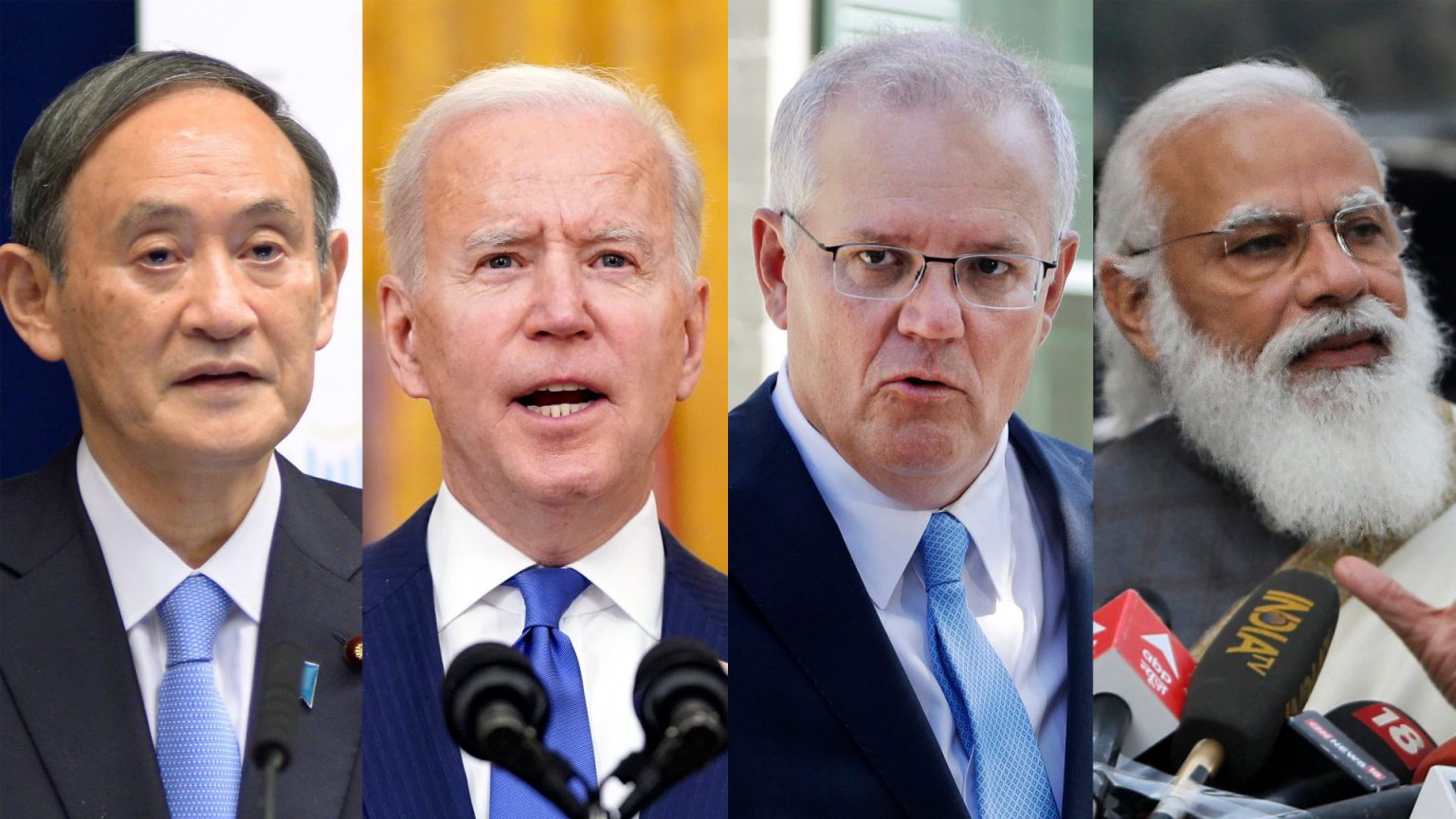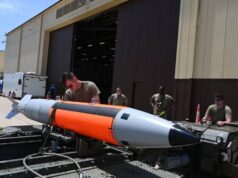QUAD – Revival And Future

By

The first virtual ‘Quad’ summit between the top leaders of the four countries held on 12 March 2021 gave a strong message to the rest of the world that the ‘Quad’ is here to stay. It also showcased that India is a principal player on the global stage which cannot be overlooked. The joint statement issued after the summit said, ‘together we commit to promoting a free, open and rule-based order, rooted in international law to advance security and prosperity and counter threats to both in the Indo-Pacific and beyond.’ The idea of the Quadrilateral Security Dialogue or ‘Quad’ to include India, the US, Australia and Japan, was first mooted by Japan in 2007 for providing collective security in the strategically important but volatile Indo-Pacific region. The common threat was from despotic Beijing which disregarded the rule-based order in the region. However, it failed to take off as Australia pulled out, apparently due to Chinese pressure. Another attempt to revive the ‘Quad’ by Japan was made in 2012 but it did not receive much support from other countries.
The revival of ‘Quad’
China has been making aggressive claims in the South China Sea. The USA fears China as an emerging superpower in the Indo- Pacific region. To check the Chinese influence in the region, the need for common collective security in the Indo- Pacific region was felt. Initially, India had not shown much interest in joining the ‘Quad’ openly, due to fear of antagonising China. But after the face-off with China at the Himalayan borders in 2017 at Doklam and then in 2020 at Ladakh, India has been pushed to join ‘Quad’ to challenge China’s expansionist designs in the Indo-Pacific region. Though “Quad’ is limited to only the Indo-Pacific region and has nothing to do with a threat to India’s land borders, but it gives options to India to pose a challenge to China in the seas. China has also severed its trade relations with Australia as punishment for joining ‘Quad’. Chinese assertive behaviour at Senkaku islands has made Tokyo more apprehensive and alert.
China’s militarisation of the islands and aggressive claims in the South China Sea and individual conflicts with ‘Quad’ countries have brought these countries together to form a common strategic alliance to counter the Chinese growing hegemony in Indo- Pacific region. Thus, 2017 saw the revival of the ‘Quad’ coalition between India, the US, Australia and Japan to keep the critical sea routes in the Indo-Pacific free of Chinese influence. Quad is perceived as the league of like-minded democracies converging across the Indian and Pacific oceans. Since then, several meetings have been held between the Quad countries to take the coalition to a next level.
The growing Chinese assertiveness in the South China Sea has given hope to the small ASEAN countries to challenge China with support from ‘Quad’. China says ‘Quad’ is another Asian version of the North Atlantic Treaty Organisation (NATO) to contain China.
Changing Dynamics of ‘Quad’
There are a lot of questions about the structure and goals of the ‘Quad’ at this moment, making it difficult for each member to align their perceived vision with a common vision for the Indo-Pacific. Though the nations are committed to the idea of a ‘Free and Open Indo-Pacific’, the cohesion is still loosely arranged and has not yet been formalised.
Though there is a naval military exercise, ‘Malabar’ in the Indian Ocean region and security dialogues between the ‘Quad’ countries but it lacks a formalised strong security arrangement in the Indo-Pacific region. Quad is a maritime grouping between the countries with a focus on Indo- Pacific. Quad allows members to join/leave the grouping based on their respective national interests. They are building issue-based alliances also. A member could exclude itself from a particular issue-based alliance. In 2020, the Resilient Supply Chain Initiative (RSCI) was conceptualised by Australia, India and Japan to diversify procurement. A regional infrastructure initiative is driven by the US, Australia and Japan to promote quality infrastructure development.
There is space for non-Quad actors also to participate in ‘Quad’’ activities. Recently, the Philippines and South Korean Navy joined the ‘Quad’ naval exercise. Due to this flexibility, we will find countries like France, UK, Germany, Canada etc willing to join Quad to challenge China’s growing assertiveness in the Indo Pacific region. South-East Asian Nations have not shown keenness to join the grouping. They are too much dependent on China due to their trade relations. Decoupling from China will hurt the regional countries severely. The ASEAN are not willing to become a contested ground for great power rivalry between the ‘Quad’ and China.
Recent ‘Quad’ Summit
Since 2017, almost ten meetings have been held between the officials of the four countries, which includes three ministerial-level engagements in the last three years. The recent ‘Quad’ Ministerial Meeting was held on 18 Feb 2021 during which the members emphasised their commitment to rule-based international order; respect for territorial integrity and sovereignty; freedom of navigation in international seas and peaceful resolution of disputes. No joint statement was issued after the meeting. Each country gave a separate statement without mentioning China. The Quad failed to produce anything concrete and was full of symbolism.
The maiden summit of the Quadrilateral Security Dialogue on 12 Mar 2021, convened by Joe Biden reflects the urgency attached by the US to shape the course of the group of Indo-Pacific nations towards the shared goal of watching an aggressive China. The summit largely focussed on five objectives to include the Covid-19 crisis, maritime security, emerging technologies, economic cooperation and climate change. Though none of the leaders’ named China but China’s assertive and aggressive actions hung large over the meeting was an unstated part of the agenda.
The vaccine initiative is the most significant and historic deliverable from the summit as greater access to doses to nations across Indo- Pacific will help in the vaccine race with China and reinforce India’s credentials as the largest trusted and reliable vaccine manufacturer and supplier of the world. The vaccine will be developed by the US, manufactured in India, financed by the US and Japan and Australia will provide the last mile and logistical support.
‘Quad’ leaders also agreed on creating three working groups that would give the loose grouping a more formalised structure to deal with common challenges across the Indo-Pacific. The ‘Quad’ vaccine group will work out the implementation plan for vaccine partnership. ‘Quad’ climate group will work towards the implementation of the Paris Agreement and strengthen climate actions globally. ‘Quad’ critical and emerging technological group will focus on sharing of future technologies and their safe and judicious use. Quad leaders also agreed to hold an in-person meeting in the latter part of this year.
Future Prospects of ‘Quad’
The two major Pacific powers (China and the USA) are moving into a more adversarial phase of the relationship. The USA wants to formalise this block to maintain its superiority in the region and to restrain China.
All the ‘Quad’ countries must reach out to develop a comprehensive vision on Indo- Pacific which would be based on current and future maritime challenges and advance everyone’s economic and security interests. The understanding between each nation will take many years to form a proper economic bubble. The future of quad will be blurred if these nations will not be able to cooperate in economic terms. The success of ‘Quad’ will depend on the collaboration between like-minded nations which will propose some kind of opportunities and chances for every member state benefit.
The recent skirmish between Indian and Chinese security forces has changed Delhi’s perspective and made Indian policymakers look out for other alternatives even in the emerging technological domain. The cyber space, intelligence sharing, space technology and rare earths are other areas of cooperation which could pave a way to healthy growth of ‘Quad’.
The option of ‘Quad’ growing into ‘Quad Plus’ with other countries from Europe and SE Asia participating shall be highly dependent on the accomplishment of the existing core team of ‘Quad’. The effective implementation of a cohesive economic and military strategy by these nations shall surely encourage other regional countries to participate in the ‘Quad’ objective. The outreach to the littoral states is especially important. Can the ‘Quad’ really stop the Chinese expansionism without the support of ASEAN nations? How do we bring ASEAN countries to participate in the ‘Quad’ would be a real challenge?
Will the informal forum of ‘Quad’ transform into a full-fledged security alliance of the four nations? Today we live in a globalised world where our interests are entangled with each other. The fault lines are more blurred and complex to differentiate among the competitors, adversaries and enemies. Being part of a security alliance may not resolve our problems with China as this alliance is Indo-Pacific specific and not related to our land borders. No country can count on it exclusively. We need to enhance our capabilities and strengths and face the challenge posed by our adversaries. Ultimately, the internal strengths of a country play a more prominent role in its national survival than the security alliances. Quad in its current form serves strategic purposes, but if formalised into a security alliance it may aggravate the situation.
We need to watch the US reaction when the first batch of Russian made S-400 Air Defence Missile systems are delivered to India, later this year. Will the US impose sanctions on India or will it offer a waiver? If it imposes sanctions then ‘Quad’ cannot progress further? We need to wait and watch for this aspect as it comes.
Conclusion
India needs to carry out a realistic assessment before it decides to engage with resurgent China. Quad seems to aim at putting psychological and geopolitical pressure on China. China shall always be a potent adversary in the region. The arms race with China is something India cannot afford to start now or in near future. Quad based jointness may be a choice and necessity for India to maintain pressure on China. The well-measured approach in the Quad, without antagonising China beyond a point can make this inevitable relationship advantageous for India. Needless provocation of China should be avoided and we should try and build upon peace initiative along both LAC and LOC between the two neighbours, to advance economically and militarily.




